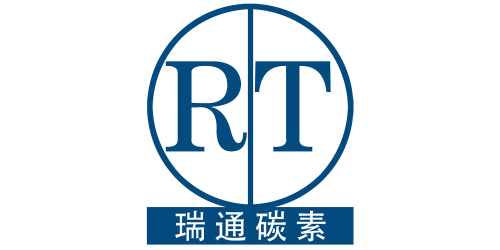
Hebei Ruitong Carbon Releases Graphite Density Technical Standards, Leading Industry Material Application Standardization
2025-06-02
Release Date: June 11, 2025
In response to the increasing diversification and precision demands for graphite density parameters in the carbon materials industry, Hebei Ruitong Carbon Co., Ltd. has officially published the "Graphite Density and Application Technical Guidelines." This comprehensive guideline integrates the density characteristics of various graphite materials and proposes tailored solutions for industrial applications, marking a significant milestone in the standardization of graphite electrode materials. It also provides robust support for the high-quality development of the entire carbon materials sector.
Establishing a Technical Standard System Amid Industry Demands
As high-end industries such as steelmaking, power generation, nuclear energy, and chemical processing impose stricter requirements on graphite material performance, graphite density has become a critical indicator for evaluating material quality and functionality. Graphite density directly affects the material’s compactness, mechanical strength, electrical conductivity, and thermal stability, all of which are crucial for graphite electrode longevity and efficiency. As a leading domestic carbon enterprise, Hebei Ruitong Carbon proactively responded to national policies promoting green and intelligent manufacturing by leveraging extensive research and development and production experience to systematically establish industry-wide standards covering natural flake graphite and isostatic graphite density parameters and their applications.
Key Technical Highlights
The guideline specifies density ranges and performance characteristics for two primary types of graphite materials:
1.Natural Flake Graphite
Density controlled between 2.15 and 2.20 g/cm³, featuring high crystallinity and ultra-low porosity, imparting exceptional thermal stability and chemical inertness. This type is widely used in manufacturing high-end refractory materials, high-temperature linings, and specialized chemical equipment, maintaining long-term stability and corrosion resistance under severe thermal conditions.
2.Isostatic Graphite
Produced using advanced isostatic pressing techniques with densities exceeding 1.90 g/cm³, combining high mechanical strength and isotropic physical properties. Due to its excellent electrical conductivity and heat resistance, isostatic graphite is extensively employed in electric arc furnace (EAF) electrodes, nuclear reactor moderators, aerospace, and other cutting-edge applications, meeting stringent safety and performance criteria.
Density Control Technology and Performance Optimization
According to Zhao, the Quality Control Manager at Ruitong Carbon:
"Density is a core parameter that reflects graphite material compactness, electrical conductivity, and mechanical strength."
Through rigorous raw material selection, precise control of sintering temperature (up to 3000°C), and optimized pressure parameters, Ruitong Carbon achieves high-precision graphite density control, significantly enhancing product performance.
For example, graphite electrodes used in steelmaking with densities above 1.85 g/cm³ can typically withstand current densities up to 25 A/cm², substantially reducing unit energy consumption and electrode wear. Moreover, electrode resistivity remains below 6 µΩ·m, ensuring excellent conductivity and arc stability.
Quality Assurance System and Industry Support
The publication of the "Graphite Density and Application Technical Guidelines" represents a major advancement in Ruitong Carbon’s efforts to establish a comprehensive graphite material standards system.
The company has developed a quality assurance framework covering over 30 key technical parameters, including:
1.Density
2.Purity
3.Compressive Strength
4.Electrical Resistivity
5.Thermal Conductivity
This rigorous quality control system supports customized, high-performance graphite material solutions across sectors such as steel manufacturing, chemical processing, renewable energy, and nuclear power, ensuring product stability and reliability while facilitating downstream industrial upgrades and green transformation.
Professional Analysis and Expanded Application Scenarios
Impact of Graphite Density on Electrode Performance
Graphite density is a fundamental factor influencing electrode durability and operational efficiency. High-density graphite effectively reduces internal porosity, minimizing oxidation and thermal damage, thus extending service life under the high-temperature and high-current conditions of electric arc furnaces. Electrodes with densities in the 1.85 to 1.95 g/cm³ range typically exhibit resistivity below 6 µΩ·m, guaranteeing superior electrical conductivity and arc stability.
Mechanical and Thermal Performance Assurance
High-density graphite exhibits compressive strengths exceeding 60 MPa, ensuring mechanical stability under clamping forces and furnace vibrations. Additionally, its thermal conductivity surpasses 100 W/(m·K), facilitating efficient heat dissipation and mitigating thermal shock effects, thereby prolonging electrode life and improving operational efficiency.
Typical Industrial Applications
1.Steelmaking Electrodes:High-density, high-purity graphite electrodes optimize arc performance, reduce electrode consumption, and improve energy efficiency in electric furnaces, aiding steel plants in achieving energy savings and emission reductions.
2.Nuclear Applications:Isostatic graphite, with controlled density and isotropic properties, ensures safety and longevity in nuclear reactor moderators.
3.Chemical Equipment:Custom graphite materials with tailored density and purity are widely used in corrosion-resistant reactor linings and heat exchangers, leveraging their chemical stability and high-temperature resistance.
Future Outlook
Hebei Ruitong Carbon will continue to invest heavily in research and development to advance graphite density control technology and deepen the industrial standardization of applications. The company is committed to driving the carbon materials industry towards high-quality, sustainable development. Through innovation and standards leadership, Ruitong aims to build a greener, more efficient, and intelligent graphite materials supply chain, accelerating industry-wide progress toward intelligent manufacturing and carbon neutrality.
The release of the "Graphite Density and Application Technical Guidelines" by Hebei Ruitong Carbon not only provides scientifically grounded technical standards for the industry but also injects strong momentum into the industrial upgrading of graphite electrodes and related carbon materials, marking an important milestone in China’s green transformation of the carbon industry.
Please leave us a message
- English
- French
- German
- Portuguese
- Spanish
- Russian
- Japanese
- Korean
- Arabic
- Irish
- Greek
- Turkish
- Italian
- Danish
- Romanian
- Indonesian
- Czech
- Afrikaans
- Swedish
- Polish
- Basque
- Catalan
- Esperanto
- Hindi
- Lao
- Albanian
- Amharic
- Armenian
- Azerbaijani
- Belarusian
- Bengali
- Bosnian
- Bulgarian
- Cebuano
- Chichewa
- Corsican
- Croatian
- Dutch
- Estonian
- Filipino
- Finnish
- Frisian
- Galician
- Georgian
- Gujarati
- Haitian
- Hausa
- Hawaiian
- Hebrew
- Hmong
- Hungarian
- Icelandic
















